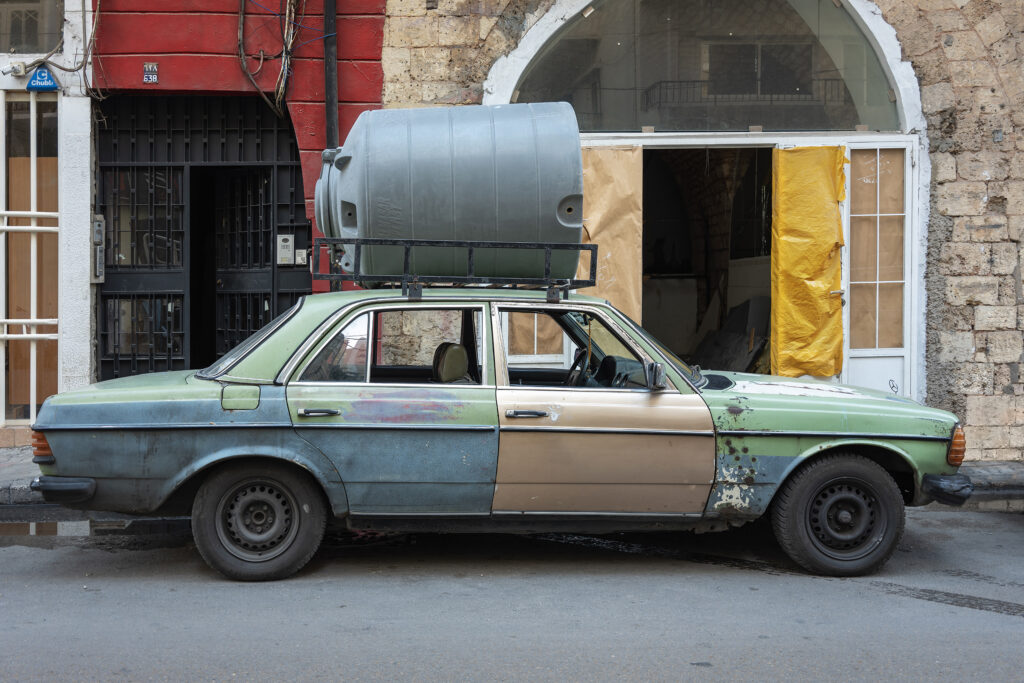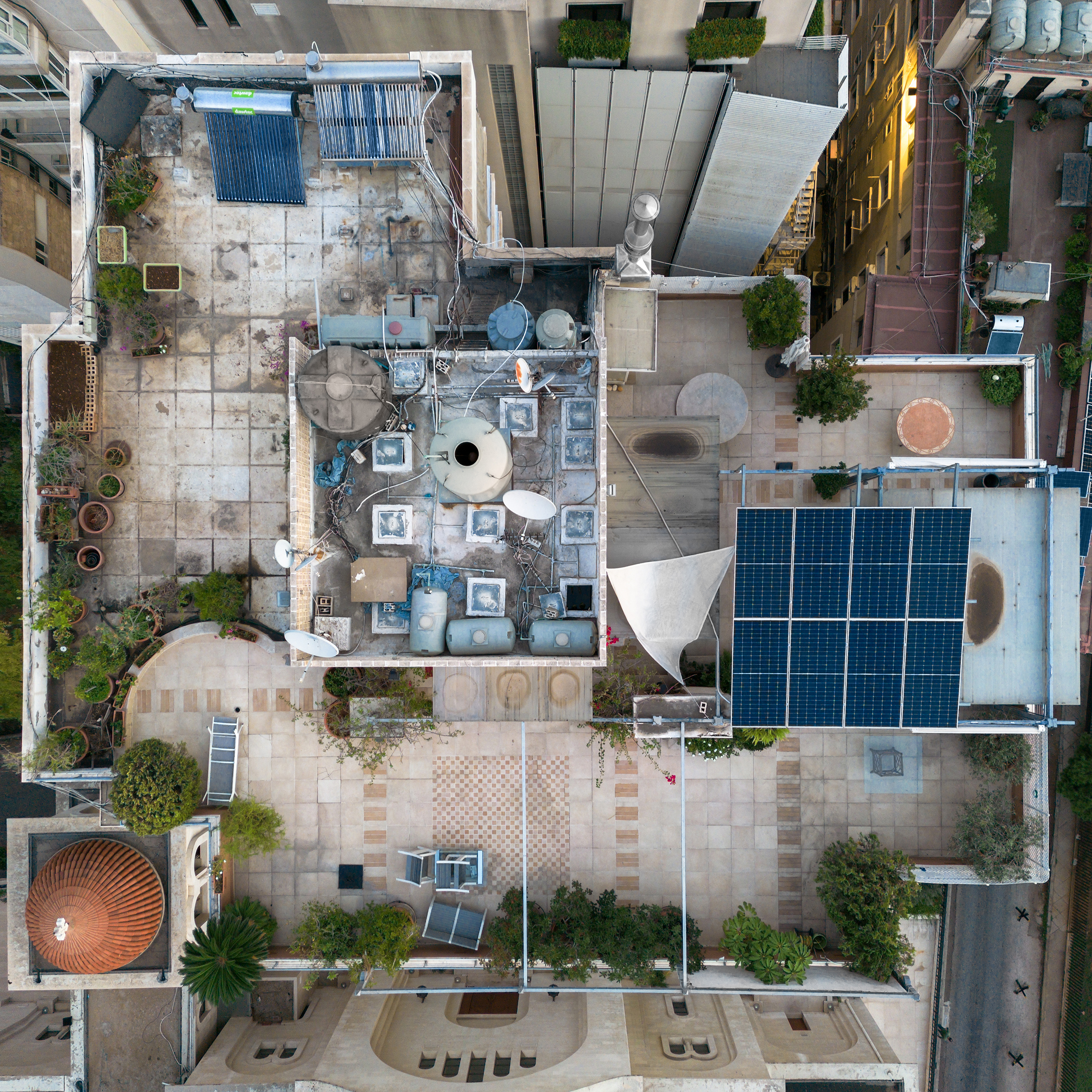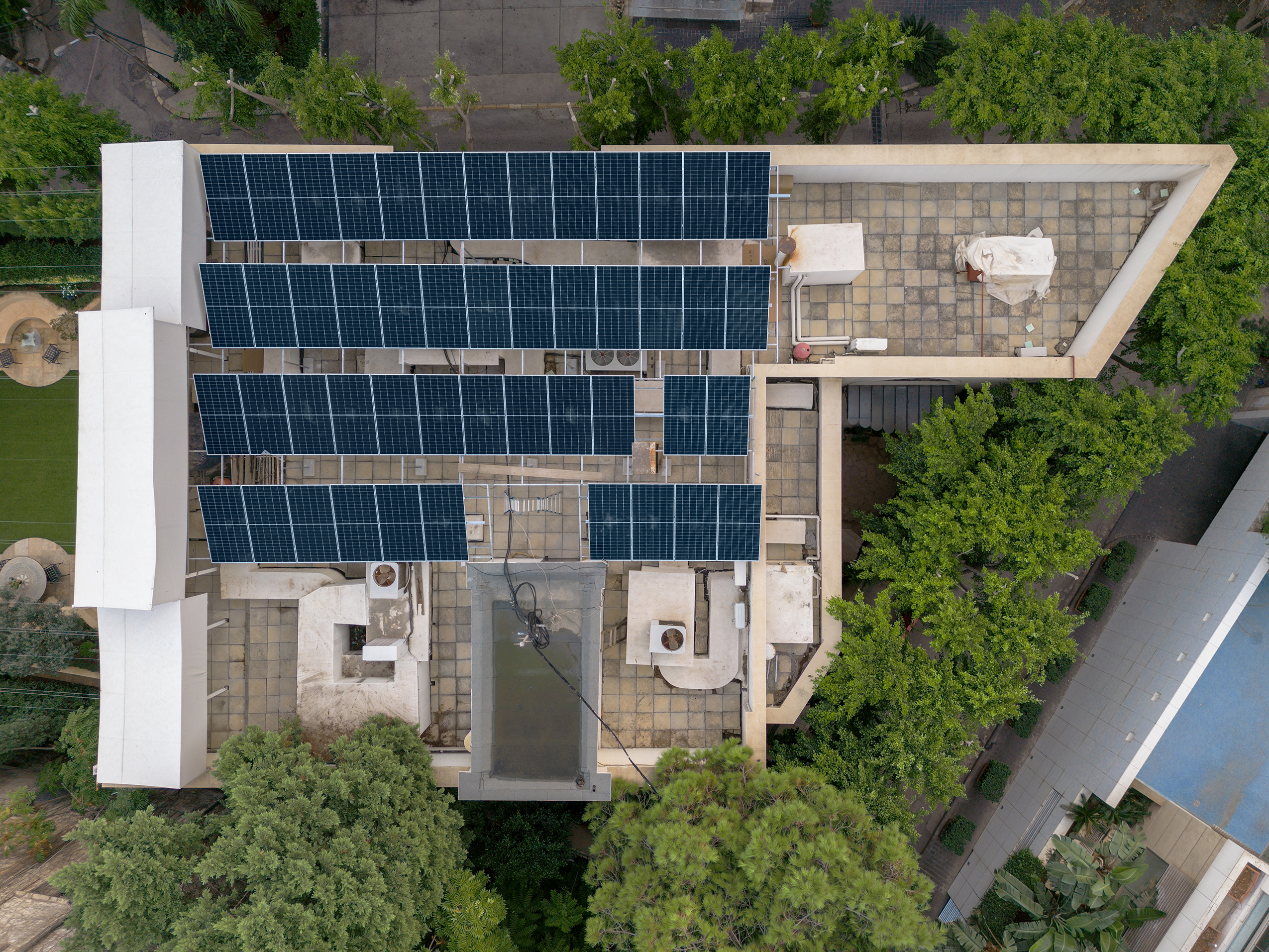
All images © Dia Mrad
Dia Mrad’s people-free photographs capture the resourcefulness of the Beirut population
How do you photograph a crisis that is engulfing every section of society? That was the question facing Dia Mrad when he returned to Lebanon in 2019, having spent two years in Europe following his master’s degree in architecture at The Holy Spirit University of Kaslik, Jounieh. Back in Beirut, he shared the anxieties and mounting anger of his fellow citizens. The 17 October Revolution had led to prime minister Saad Hariri’s resignation, with widespread protests against sectarian rule, corruption, and a lack of basic services continuing into 2020. Then the Covid-19 pandemic and an explosion at the city’s port in August 2020, in which ignited ammonium nitrate killed over 200 people, further exacerbated the economic turmoil. GDP per capita dropped 36.5 per cent between 2019 and 2021, and the country faces ongoing triple-digit inflation – a figure that reached 268.8 per cent in April 2023.
Throughout his studies, Mrad had used photography to “contextualise architectural design”, accumulating an archive to inform his research into the links between European and Lebanese building styles. Surrounded by infrastructural and social breakdown, he shifted focus towards “the physical transformations and indications of the economic crisis” for his ongoing project, Utilities. It is an “archive for the future”, he says, a study for a suffering nation.

“By showing the architecture, we’re able to understand the human condition”
Utilities focuses on three factors which together tell the story of Beirut’s decline. The first is the huge increase in use of solar panels to supplement the city’s scarce power supply; the second is the rooftop water tanks, which are topped up by private companies when mainline provisions are down; and the third is the metal structures which now encase ATMs and protect the facades of high-street banks. The liquidity crisis and devaluation of the Lebanese lira have led to state restrictions on bank opening hours and cash withdrawals; the result is an increase in armed robberies and hostage situations carried out not just by organised criminals, but by ordinary people needing to access their money.
“Normally crises mean a lack of material, but these three artefacts are material additions to the city,” Mrad explains. “They’re physical layers that have been added and are symbolic of the economic crisis. But it also contrasts with the concept of what a crisis is.” Mrad rarely includes people in his images, preferring “an indirect approach”, which echoes his architectural focus on “extracting stories embedded within the materiality of the city”. Utilities’ solar panel images were made using overhead drones, creating gridded, almost anatomical shots. The photographs of water tanks are taken closer up, rubber pipes snaking beyond their perimeters. His images of Beirut’s bank frontages are startling in their plainness, the steel boards speaking to an everyday life far from normality.

“I think it’s more ethical not to show people who are suffering,” Mrad explains. “By showing the architecture, we’re able to understand the human condition.” Over time, this gives the project an “anthropological aspect”, he says. Utilities becomes an archive of the seemingly mundane, but it also provides an alternative perspective on the resourcefulness of a neglected population.
Solutions to the country’s economic and political slide seem distant. Mrad plans to expand the project to encompass supermarket and pharmacy shortages; he also mentions long queues at gas stations as another potential motif. He showed new iterations of Utilities’ solar panel works in November last year at the Sharjah Architecture Triennial, where the theme was The Beauty of Impermanence: An Architecture of Adaptability. Mrad also plans to exhibit the project in Lebanon in 2024, but remains wary of showing the photographs in an art context given the sensitivity of the situation on the ground. His closing assessment of his country is damning: “We spend a good amount of our days having to figure out how to get basic utilities.”
The post In Beirut, solar panels and water tanks tell a story of decline appeared first on 1854 Photography.



